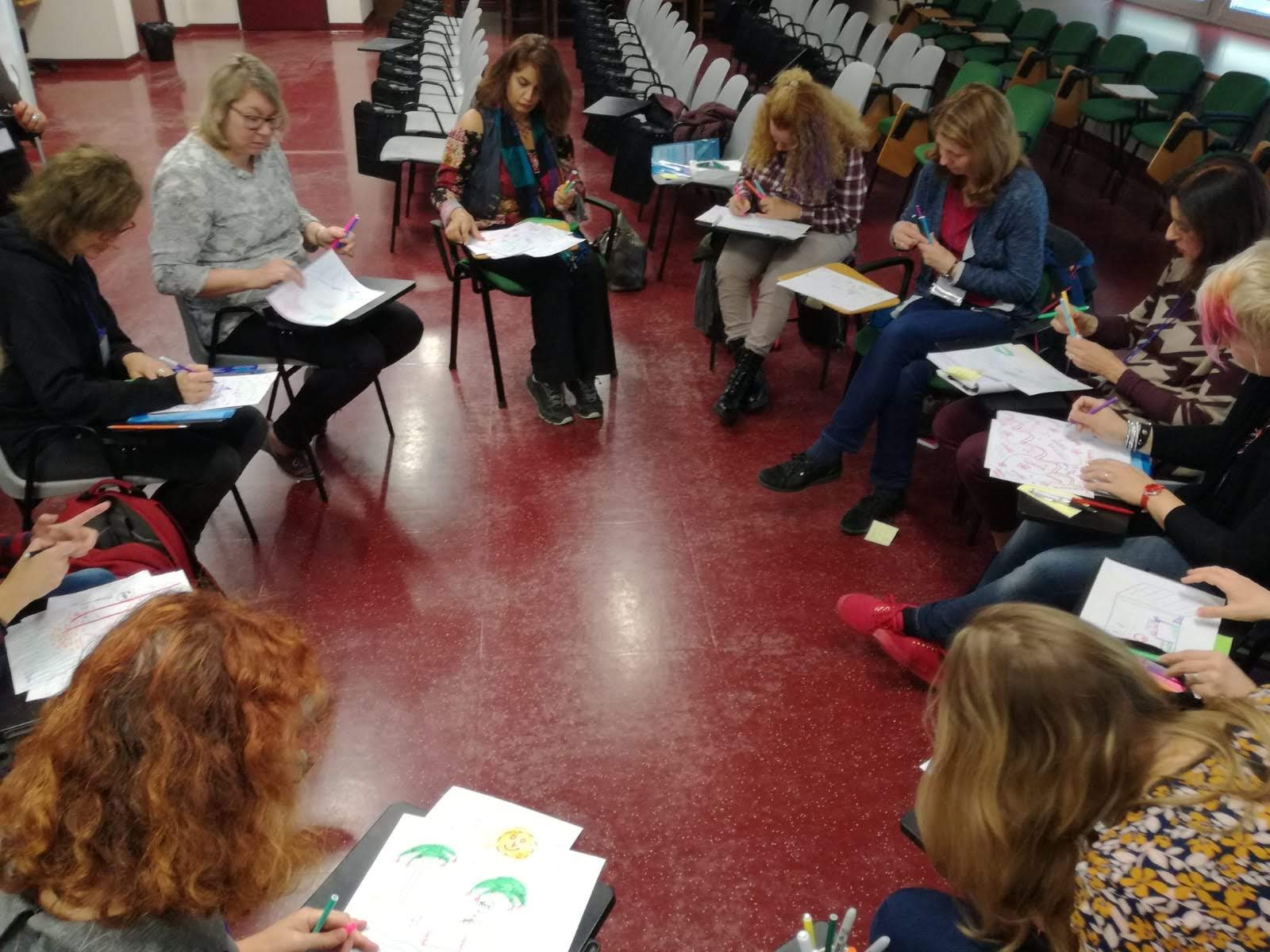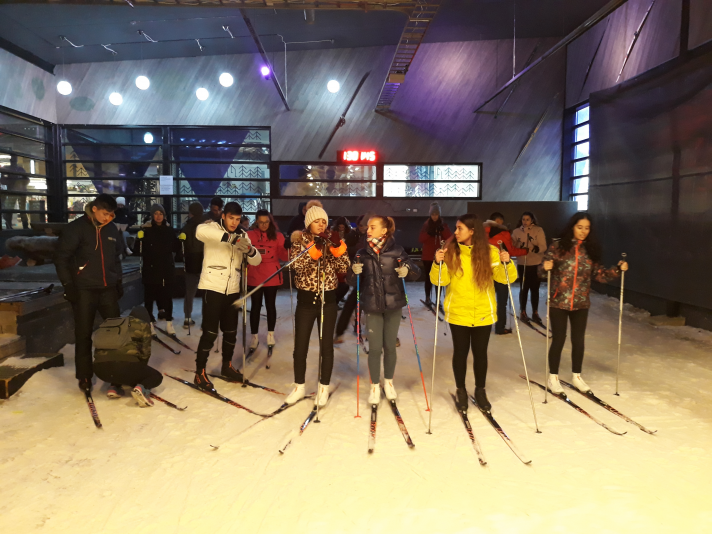
Topic(s) addressed
Students´ different ways of learning and the long, occasional absences of sports students, challenged us to develop flexible, personal ways of studying that can help students improve their capabilities to study on their own on the Internet within various learning environments. Furthermore, given that information technology brings both new possibilities as well as big challenges to teachers, ways had to be sourced to allow technology to enhance learning without being an added burden. Naturally, effective distance learning and digital learning environments increase the need for the use of technology in teaching, and in combination with digital skills, a need arose to improve students’ skills to work in teams, as well as their skills to study and work in international surroundings so as to better prepare them for the challenges of modern working life. In addition to developing distance learning approaches and the use of international digital learning environments, another one of the project’s goals was to improve the schools readiness for interdisciplinary and co-operative teaching, with a final development goal of extending cooperation with parties external to our school staff.
Target groups
The target group consisted of 12 subject teachers, a welfare worker, and a head teacher, all of whom participated in various in-service trainings and courses.
Methodologies
The project had strong links to national development projects, which provided for a good model of how EU and local level developments can support each other. One of the approaches developed in this network with regard to distance learning approaches was the digital self-assessment tool for students. Furthermore, one of the goals was to improve readiness for interdisciplinary teaching and co-operative teaching, with courses for the development of emotional and social skills as well as conflict resolution having provided teachers with a good environment within which they could develop their co-operative skills. In addition to the courses, the school organised a sustainable development-themed year that made use of creative learning environments in numerous events. Another development goal was to extend cooperation with parties external to the school’s teaching staff; for example, in a trial project where they made use of external help in organising science and business courses. This helped create new contacts and the sourcing of easily reproducible methods in the creation of more varied learning environments for students. Also, a number of multi-disciplinary courses were offered in the sciences by combining physics, chemistry, and biology, which were co-taught by different subject teachers. The use of English in teaching and in learning materials was tested on the courses of various subjects, with a number of students having reacted positively to language immersion lessons, while others found that this made the learning of target subjects harder. The development of distance teaching and the use of IT skills in teaching made it possible for students to study regardless of time or place, which was supported through a specialised course for students in distance learning skills. The course is now being further developed based on preliminary feedback, and, as a result of the course, both teachers and students have become better equipped at handling international situations, with an increased amount of learning that can now be individualised to the needs of individual students.
Environments
In addition to the teachers who participated in the courses, the project has enabled the entire school staff to receive international training, while creating contacts to develop innovative learning environments towards developing high school teaching. Furthermore, the use of the eTwinning platform was extended and made more versatile as a result of the work done through the project; this has also been extended to other international cooperation such as the Erasmus+ KA2 project. The school has arranged local training events with eTwinning Ambassadors, and a new teaching team was also trained in the use of the eTwinning platform, which included both training and the use of CLIL-methodologies. Students’ use of Google Meets, Classroom, Moodle, and Instagram for social media activities has steadily increased as a result of the project. However, one of the project’s biggest impacts was the overall improvement of both students’ and teachers’ attitudes and approaches to distance learning. Although this had been ‘facilitated’ by the COVID-19 pandemic, the approaches developed by the projects certainly supported this development, especially with regard to developer teachers, students’ self-assessment model, and most importantly, the distance learning course offered to all first year students in 2018/2019. The Erasmus+ project further supported the development process by providing teachers with key skills and insights both into distance learning pedagogics, approaches, and logistics as well as the tools and methods needed for said purposes.
Teachers
During the project, teachers participated in training exercises to improve their ability in the use of IT skills for online and phenomenon-based teaching, as well as in the creation of individualised learning paths for students. The establishment of key developer teams consisting of 2-3 teachers that focused on the project’s main topics also indicated a positive way forward. Teams were not only established around distance learning, but also on multidisciplinary activities, international activities, and other such exercises. The project resulted in clear improvements in the planning and production of online teaching materials, with such newly obtained skills put to the test in spring 2020 due to the COVID-19-pandemic.
Impact
Throughout the project, the school found ways of transforming its learning atmosphere to render it more stimulating and involving for students, so as to nurture their own sense of responsibility and commitment to their studies. Additionally, based on a survey, students and parents found international activities to be an important part of the school’s activities, with the survey’s positive feedback and the experiences that had been gained during the project leading our staff to be even more motivated in increasing the school’s attractiveness to potential applicants, while improving students’ learning experiences and results. In conclusion, our school is a modernised institution, where students are able to study using various methods in a number of different types of learning environments. The development of distance teaching and the use of IT skills in teaching made it possible for our students to study regardless of time or place. Both our teachers and students are well equipped to handle international situations, with increased learning areas now individualised to meet the needs of individual students. The school is now an integral part of European networks, with the eTwinning platform being normalised into its everyday activities. Our school continues to develop itself in an increasingly international direction.
- Reference
- 2018-1-FI01-KA101-046859
- Project locations
- Finland
- Project category
- Secondary education
- Project year
- 2021
Stakeholders
Participants
Cooperativa sociale Glocal Factory
- Address
- Italy
Erasmus Learning Academy
- Address
- Italy
EUROPASS SRL
- Address
- Italy
EUROMIND PROJECTS SL
- Address
- Spain
InterEducation IEI Ltd
- Address
- Ireland
Istituto per la Formazione, l'Occupazione e la Mobilità
- Address
- Italy

